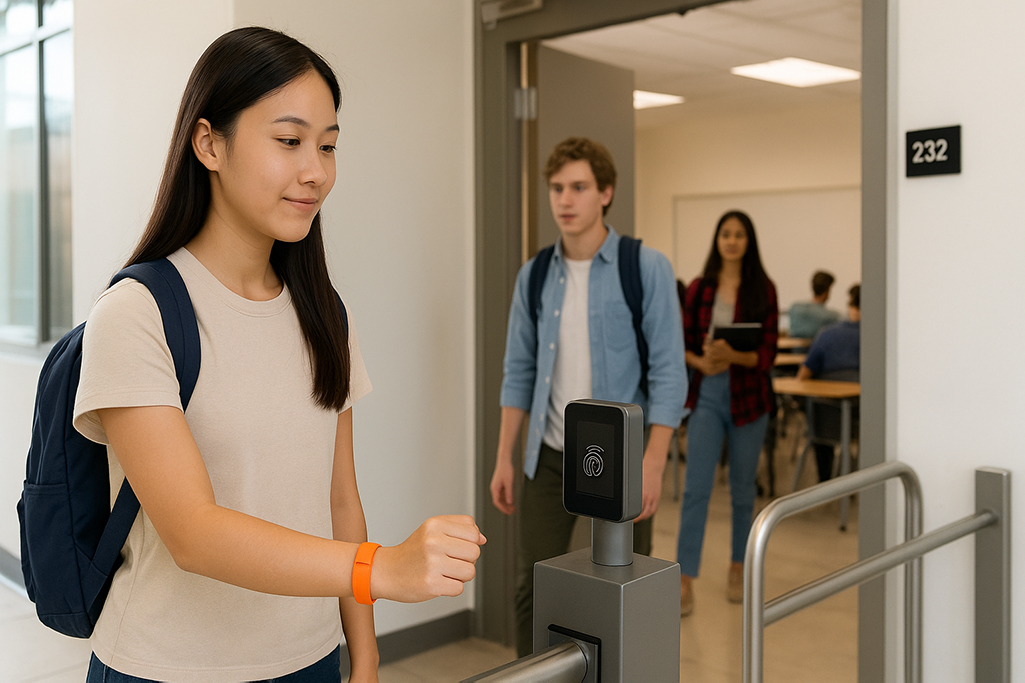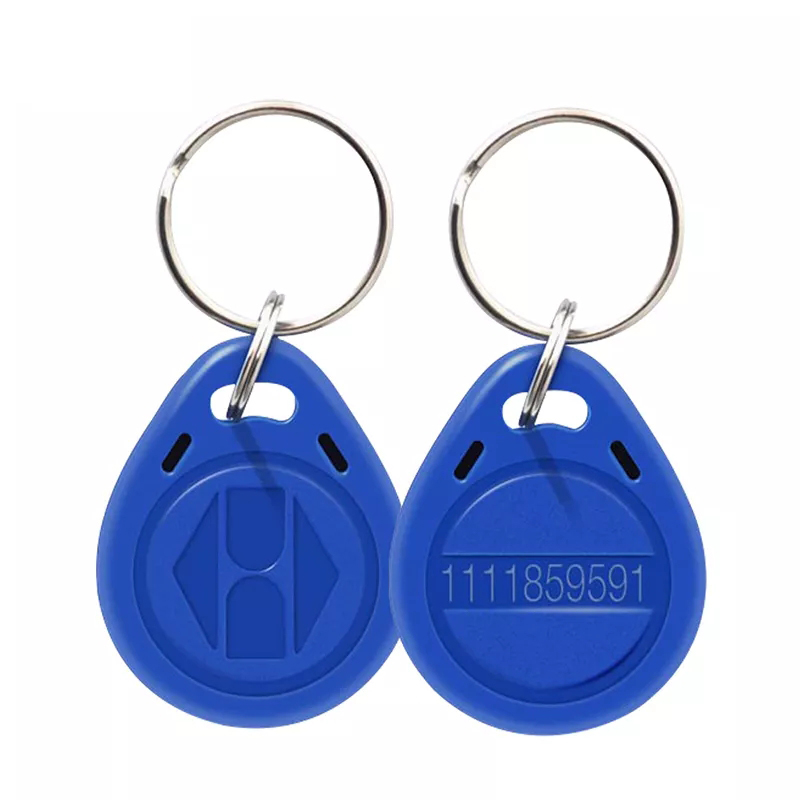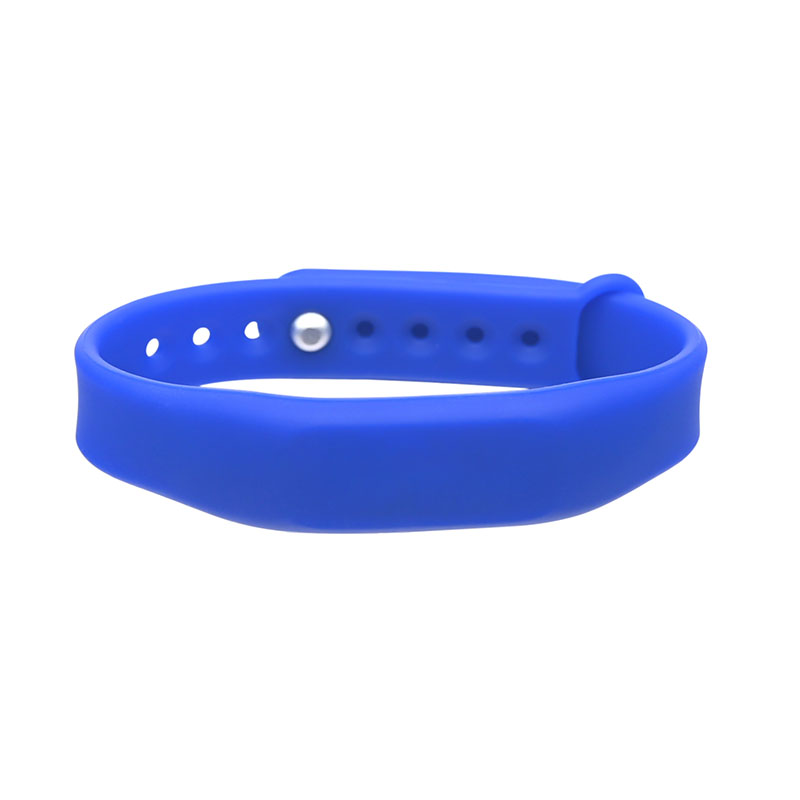
Introduction: Why Campuses Are Turning to Wearable Tech
If you visit any modern university today, you’ll notice the buzzword “Smart Campus” showing up everywhere—from brochures to IT strategy reports. And it’s not just marketing fluff. Schools are under pressure: bigger class sizes, stricter safety requirements, and higher expectations from digitally native students. Pen-and-paper attendance sheets or simple plastic ID cards don’t cut it anymore.
Over the past few years, I’ve seen more institutions adopting RFID Wristbands as a surprisingly effective answer. These small, durable wearables are not just about convenience; they reshape how attendance is tracked and how security is enforced across campus. Think of them as a key, a ticket, and a digital footprint—all in one band worn on the wrist.
At the core, an RFID Wristband is a chip and antenna embedded in silicone, fabric, or PVC. When it comes near a reader, it transmits a unique ID. That’s the simple part. The interesting part is how schools apply them.
Passive wristbands (the kind most campuses use) don’t need a battery. They’re cheap, reliable, and perfect for attendance or door access.
Active wristbands, though pricier, can broadcast signals over longer distances and sometimes integrate with Bluetooth or sensors. A few high-tech campuses experimenting with real-time location tracking go for these.
Frequencies matter, too. HF (13.56 MHz) chips—MIFARE or DESFire, for instance—are common because they balance short-range security with low cost. UHF options allow long-range reading (imagine buses logging boarding automatically), but they’re more sensitive to interference.
Attendance: From Roll Call to Real-Time Data
Every teacher knows the pain of taking attendance manually. In a class of 80, it can eat up 15 minutes. Multiply that by dozens of classes per day, and the lost time is enormous.
With RFID bands, the process changes completely. Students walk into a lecture hall, their wristbands are scanned by readers near the door, and attendance is logged instantly. No queues, no calling out names.
But it’s not only about speed. When the system syncs with the Student Information System (SIS), administrators see real-time dashboards: who’s late, who’s consistently absent, and which courses are hitting attendance targets. Some universities even use analytics to spot early warning signs—students missing multiple sessions in a row can be flagged for academic counseling.
One dean I spoke with compared it to “getting a heartbeat of the classroom.” Instead of treating attendance as a bureaucratic checkbox, schools now read it as a pulse of student engagement.
Security: Beyond Locked Doors
RFID Wristbands are also a quiet but powerful security layer. In fact, some IT managers tell me they first pitched the technology for safety, not attendance.
Access control: Instead of carrying fragile plastic ID cards that get lost or shared, wristbands act as tamper-resistant keys. Only authorized students can open dorm doors, labs, or restricted buildings. Every entry is logged, creating an audit trail.
Emergency response: Imagine a fire drill. Traditional headcounts are chaotic. With RFID systems, administrators can instantly check which IDs haven’t exited the building yet, directing staff to where help is needed.
Visitors and contractors: Temporary bands with limited permissions let schools track non-students on site without disrupting operations.
In one Asian university pilot, RFID data even integrated with AI video analytics, so the system flagged suspicious tailgating—people trying to sneak in right behind a valid user. That’s a level of control paper logs or ordinary cameras can’t match.
How the System Fits Together
It’s tempting to think of RFID Wristbands as “just another gadget,” but their effectiveness depends on infrastructure:
Readers and antennas placed at entry points or lecture halls. Placement is critical; one poorly positioned antenna can create blind spots.
Middleware that filters duplicate scans, prevents errors, and pushes clean data to the campus database.
Integration with SIS, access control, or even payment systems (some schools let students use wristbands to buy meals).
Done right, the system feels invisible. Students simply wear the band, while IT teams and administrators get reliable, structured data feeding into their existing platforms.
Data Protection and Privacy Concerns
Of course, the moment you talk about tracking students, eyebrows go up. And they should. Data security isn’t optional.
Smart Campuses usually adopt chips like MIFARE DESFire EV2, which offer encryption and mutual authentication to stop cloning. Data transmission between readers and servers must be secured with TLS. Just as important, schools need role-based access control: professors don’t need to see detailed location trails, but administrators in charge of security might.
I’ve also seen institutions explicitly align policies with GDPR or CCPA. For example, attendance data might be stored for three years, but raw location data is purged after 30 days. Transparency with students helps—when they know what’s tracked and why, resistance drops.
The Messy Part: Deployment Challenges
Not every RFID rollout goes smoothly. A few common hurdles:
Signal interference: UHF signals, in particular, can be absorbed by water (yes, human bodies count) or disrupted by metal structures. Careful site surveys are non-negotiable.
Durability: Students are tough on gear. Sweat, showers, or simply bending the band can kill a cheap wristband. High-quality silicone or TPU designs are worth the investment.
Adoption: Believe it or not, some students push back—not because of privacy, but style. “I don’t want to wear a rubber band all day.” Offering multiple designs or linking the band to perks (cashless payments, faster cafeteria lines) can turn skeptics into fans.
Costs: Infrastructure isn’t free. But when administrators compare it to the hours saved on manual attendance, reduced security incidents, and even fewer lost cards to reissue, the ROI looks reasonable within 2–3 years.
Case Studies: What Real Campuses Are Seeing
Singapore University pilot: Class attendance logging time dropped from 15 minutes to under 3 minutes across lecture halls. Professors reported smoother starts, and administrators praised the accuracy.
European international school: Integrated wristbands with cafeteria payments. Parents could top up balances online, while the school tracked nutrition data to ensure compliance with dietary rules.
Multi-campus technical college: Combined RFID access control with bus boarding. One platform now tracks student presence both on-site and in transit, improving safety during inter-campus travel.
These aren’t just gimmicks. They show how flexible the same core technology becomes once embedded into daily routines.
Looking Ahead: The Next Layer of Smart Campuses
RFID Wristbands are solid today, but the future points toward hybrid solutions. Some campuses already test BLE beacons or UWB chips embedded in bands for precise indoor tracking—useful for lab safety or asset protection. Others experiment with linking wristbands to mobile apps, so students can manage attendance notifications or access logs in real time.
There’s also a trend of biometric fusion: wristbands acting as a second factor alongside facial recognition or fingerprints. While not mainstream yet, it may become critical for high-security research campuses.
What excites me most is context-aware services. Imagine a student walking into the library, and the system automatically suggesting available study rooms on their phone because their wristband just checked them in. That’s no longer science fiction.
Conclusion: More Than a Gadget
RFID Wristbands are not just attendance tools or campus gadgets. They’re part of a shift: making physical presence a seamless part of the digital record. Done right, they save time, boost security, and give administrators actionable data—all while fading into the background of daily life.
The schools that succeed won’t treat this as just “buying hardware.” They’ll see it as building an ecosystem: reliable infrastructure, strong privacy rules, and thoughtful design that makes students actually want to wear the tech.
In other words, a Smart Campus isn’t defined by shiny devices—it’s defined by how invisible, reliable, and human those devices feel. And right now, RFID Wristbands are one of the clearest steps in that direction.





